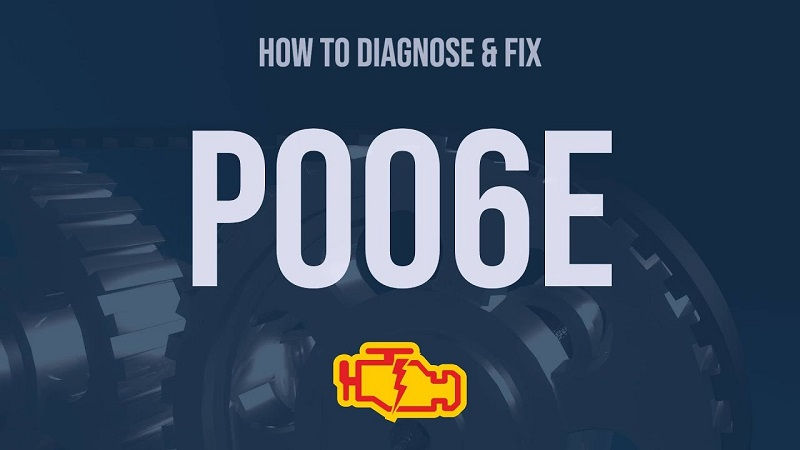This post contains affiliate links. This means I will make a commission at no extra cost to you should you click through and make a purchase [ “As an Amazon Associate, I earn from qualifying purchases.” ]. Read the full disclosure here.
P006E Turbocharger/Supercharger Boost Control “A” Supply Voltage Circuit Low GuideMechanic.Com In the labyrinthine realm of automotive diagnostics, the emergence of trouble codes serves as a guiding beacon, directing both drivers and mechanics toward potential issues within the engine.
Among these codes, P006E stands out, signaling a concern with the turbocharger or supercharger boost control “A” supply voltage circuit.
Understanding the intricacies of this code, its underlying causes, and its ramifications is pivotal for maintaining optimal engine performance and reliability.
See Also: P006C Code: MAP – Turbocharger/Supercharger Inlet Pressure Correlation
To unravel the significance of the P006E trouble code, it’s imperative to grasp the fundamentals of the components involved:
Turbocharger/Supercharger:

These are forced induction systems designed to enhance engine performance by compressing air before it enters the combustion chamber. Turbochargers are powered by exhaust gases, while superchargers are mechanically driven by the engine.
Boost Control “A” Supply Voltage Circuit:
This circuit provides power to the boost control solenoid, which regulates the amount of boost pressure generated by the turbocharger or supercharger. The ECU controls the solenoid based on various engine parameters to achieve optimal performance and efficiency.
Now, let’s delve into the essence of the P006E trouble code:
The P006E code specifically denotes a low voltage condition detected in the boost control “A” supply voltage circuit. In simpler terms, the voltage supplied to the boost control solenoid falls below the expected threshold, hindering its ability to regulate boost pressure effectively.
This anomaly can lead to diminished engine performance, reduced fuel efficiency, and potential long-term damage if left unaddressed.
Several factors may contribute to triggering the P006E trouble code:
Faulty Boost Control Solenoid:
Check out this Mac 4 port solenoid boost valve pwm 46A-AA1-JDBA-1BA

The boost control solenoid is a electromechanical valve responsible for modulating boost pressure. If the solenoid fails or becomes clogged with debris, it may struggle to operate efficiently, resulting in a low voltage condition in the circuit.
Wiring or Connector Issues:
Damaged or corroded wiring, loose connections, or faulty connectors within the boost control circuit can disrupt the flow of electrical current, leading to a drop in voltage. This can impede the solenoid’s ability to function properly and trigger the P006E code.
Faulty ECU:
In rare cases, a malfunctioning engine control unit (ECU) may incorrectly regulate the voltage supplied to the boost control solenoid, resulting in a low voltage condition. This can occur due to internal faults within the ECU or issues with its power supply.
Electrical System Issues:
Problems within the vehicle’s electrical system, such as a weak battery, failing alternator, or voltage spikes, can affect the voltage supplied to various components, including the boost control solenoid. These issues can contribute to the activation of the P006E trouble code.
Environmental Factors:
Extreme temperatures, moisture, or contaminants in the engine bay can damage electrical components and wiring, leading to voltage irregularities in the boost control circuit.
When confronted with the P006E trouble code, prompt diagnosis and resolution are imperative to prevent further damage and restore optimal engine performance. Here’s a systematic approach to troubleshooting:
Scan for Additional Codes:
Check out this ANCEL AD310 Classic Enhanced Universal OBD II Scanner Car Engine Fault Code Reader CAN Diagnostic Scan Tool-Black

Conduct a comprehensive diagnostic scan to check for any additional trouble codes that may offer insight into related issues within the engine system.
Inspect Boost Control Solenoid:
Visually inspect the boost control solenoid and its associated wiring and connectors for any signs of damage, corrosion, or disconnection. Test the solenoid’s resistance and functionality using a multimeter to determine if it’s operating within specifications.
Check Wiring and Connectors:
Thoroughly inspect the wiring harness and connectors in the boost control circuit for any signs of damage, corrosion, or loose connections. Repair or replace any faulty components as necessary.
Test Voltage Supply:
Use a multimeter to measure the voltage supplied to the boost control solenoid while the engine is running. Compare the measured voltage to specifications provided by the manufacturer to determine if it falls within the acceptable range.
Test ECU Functionality:
If all other components check out, consider testing the functionality of the ECU. Consult the vehicle’s service manual for instructions on how to perform an ECU diagnostic test using a scan tool.
Address Identified Issues:
Based on the diagnostic findings, take necessary measures to address the underlying issue. This may involve repairing or replacing faulty components, cleaning or repairing wiring and connectors, or recalibrating the ECU.
Clear Codes and Test Drive:
After resolving the problem, clear the trouble codes from the ECU’s memory and take the vehicle for a test drive. Monitor for any recurring issues and ensure that the problem has been successfully resolved.
In conclusion, the P006E Turbocharger/Supercharger Boost Control “A” Supply Voltage Circuit Low trouble code serves as a diagnostic indicator of potential issues within the boost control circuit, specifically relating to voltage supply to the boost control solenoid.
While diagnosing and resolving this code may pose a challenge, understanding its implications and following a systematic troubleshooting approach is crucial for maintaining optimal engine performance and reliability.
By addressing the root cause promptly, drivers and mechanics can ensure the health and efficiency of the engine system, thereby enhancing vehicle performance and longevity.
See Also: P006D Code: Barometric Pressure – Turbocharger/Supercharger Inlet Pressure Correlation
- BMW Catalytic Converter Price: What You Need to Know - April 24, 2025
- Scrap Catalytic Converter Price - April 24, 2025
- Honda CR-V Catalytic Converter Price - April 24, 2025
